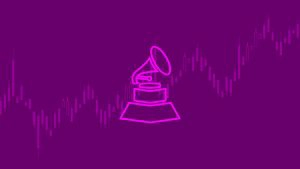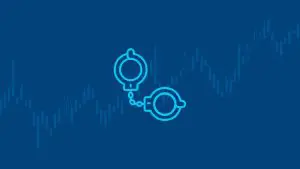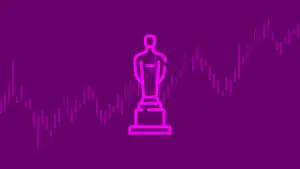If a forecast wants to know what a group thinks, setting a number between one and 100 on that belief is a straightforward way to create a consensus prediction. Turning collective opinions into probabilities provides a clear snapshot of what a group thinks about a complex topic.
However, groups are only wise under certain conditions. In his book The Wisdom of Crowds, journalist James Surowiecki identified four conditions that crowds must meet to be wise:
- Diversity of Opinion
- Independence
- Decentralization
- Aggregation
A group must have diverse opinions and arrive at their opinions independently of one another. Each member of the group must also bring their own local knowledge about the prediction market’s topic. Prediction markets are one of the best ways to aggregate all that information into a digestible number.
Without one of these conditions, groups can become unreasonable. Diverse opinions keep prediction markets from representing one worldview unchallenged. Take away independence of thought, and prediction markets can be skewed by a few influential members or one powerful group.
Prediction markets may be great decentralized aggregators, but they can go wrong with a badly structured group of traders. The flaws inherent in groups form the foundation of economist John Birge’s reservations about prediction markets.
The Mechanics of Price Discovery
Dr. Birge is a professor and economist at the University of Chicago. He’s a prediction market proponent, but he’s also keenly aware of prediction markets’ limitations. Market traders are just people, and people don’t always behave rationally.
“[The] market just goes with the information,” Dr. Birge said. “You see things that move before public announcements, and that’s people that may have information, but then [there are] other people that think, ‘Oh, I see the market moving. That means there must be information in the market,’ and therefore they bet. So there are people reacting to the movement that they see in the market and who may not have information.”
Information is a term that can be used loosely within the prediction industry. The information that enters the market is really a change in what traders are willing to pay for contracts. Buying and selling at different prices is mechanically how prediction markets work, but traders’ beliefs power prediction markets.
“That [buying and selling] always creates an incentive that if you have any type of information that, based on everything you’ve seen so far, plus what you know from observing other markets, and if there’s any difference that you feel there should be in the price, [it then] encourages people to enter and to trade,” Dr. Birge said. “It’s always encouraging trading and always getting more information out until it gets to a point where everyone…doesn’t believe that there’s a sufficient reason why they should enter the market anymore.”
The only reason that traders are entering prediction markets is because they have information that leads them to buy “Yes” and “No” contracts on events. Those beliefs can come from legitimately new information, like if the Fed announces new interest rates.
Traders can also change their behavior based on market movements themselves. They may not have watched the presidential debate, but election market bettors couldn’t have missed the spike in Kamala Harris’ debate victory price 15 minutes into the debate. Prediction market movements can act as a proxy for information. The market creates a snapshot of what traders believe as a result of the information, cutting through a layer of analysis.
That ability for price movements to inform traders about the presence of new information is why arbitrage betting can correct prices between prediction markets.
Arbitrage Betting Across Prediction Markets
There are many prediction markets from regulated companies like Kalshi to unregulated Web3 platforms like Polymarket. Many of these platforms offer similar markets, especially on subjects like economics, technological developments, and pop culture.
One trading strategy is to make opposite bets on platforms with different prices and profit from the price movement on both. This is called arbitraging and even though it’s a purely mathematical strategy, arbing reflects the influence that information should have across markets.
“The whole goal of those markets is to get all that information out,” Dr. Birge said. “And the people who are trading across markets, they’re trying to say, ‘Well, look, everything should be consistent.’ So if, it [the market price] is reflecting the entire information of what’s out there, then these two prices should be the same.”
Two Caveats to Reading Prediction Market Prices
Prediction market prices can’t be judged without understanding the information that went into those prices. Accurate information aligns market prices closer to an event’s true probability, while bad information skews the price.
“I think for the most part, I think of them [prediction markets] as being fairly accurate representations about what people believe,” Dr. Birge said. “There is the potential for manipulation. There’s also potential for bias. That is…people just maybe believe or are acting in sentiment as opposed to rationality.”
In a short time, wealthy traders can buy a position to make it appear as though a contract should be priced higher than it is.
Polymarket experienced an attempt at manipulation. There were two markets: one was for the 2024 presidential election winner and the second was a market on who the favorite to win the election would be by Friday of that week.
A small group of traders spent several million dollars buying “Yes” contracts on Kamala Harris’ victory. They hoped to increase her price enough to decrease the price of a Trump victory. The manipulators intended for Harris to emerge as the apparent favorite on Polymarket in time for the market to settle in her favor that Friday.
The attempt failed. Market prices returned to their original values, and the manipulators came out at a loss. Those kinds of short-term manipulations are possible in markets where large traders are able to throw their weight around. Had new information coincidentally made the price movements seem legitimate, that manipulative attempt could have worked.
Finally, traders can be biased. They could share false beliefs that lead them to be wrong in the same direction. Take the market on whether Elon Musk will be named the world’s richest man by the end of year. If an entire market’s traders shared a bias that linked his erratic behavior with financial loss, then those traders’ prices would look different from a group of Musk fans with faith in his ability to sustain his level of wealth.
Prediction markets may be great vehicles for capturing a group’s opinion. That doesn’t mean the people betting in those markets can relinquish their responsibilities to be informed. It certainly doesn’t mean that prediction market prices can be taken at face value without questioning the assumptions that lead to the displayed prices.
























